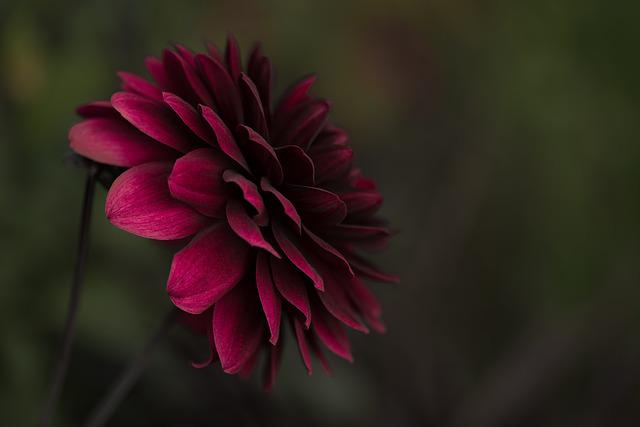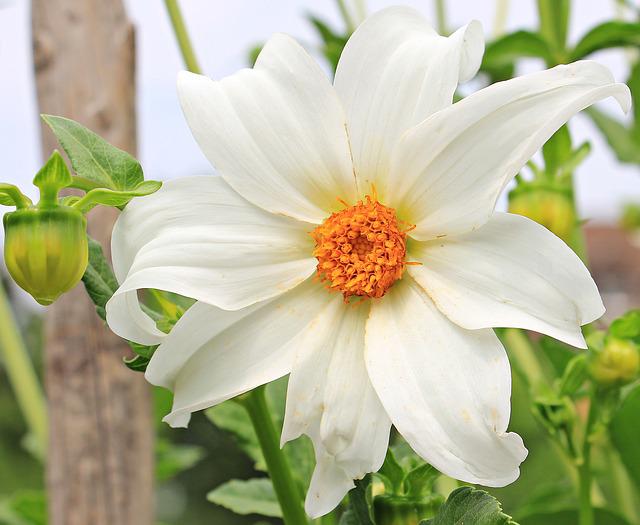Is Dahlia Annual or Perennial? Get to Know More About Dahlia’s Life Cycle

Dahlia is a beautiful flowering plant that many gardeners love to grow. However, one common question that arises is whether Dahlia comes back every year or not. The answer lies in understanding whether Dahlia is a perennial or an annual plant. Dahlias are formally categorized as “tender perennials,” which in the context of gardening is code for “it’s complicated.” This classification means that the hardiness zone affects how long they live. Depending on the winter weather in a region and whether they can endure until spring, they may develop as annuals or perennials.
A tender perennial is a perennial that can last for several years but isn’t winter hardy. For the sake of simplicity, they are frequently called annuals. They aren’t annuals, though, because they can endure more than one growing season. They typically take about six weeks from planting to blooming, and once they start blooming, there is usually continual production until frost. Plus, Dahlia plants are very adaptable and can be grown in various locations, including partial shade or full sun.
Table of Contents
Is Dahlia Both Annual and Perennial?
Simply put, yes, they are both of those things. Some places, however, do not have them. Dahlias are perennial flowers that thrive in warm climates. In cooler climates, dahlias can be grown either as annuals or perennials. However, they will either need to be brought indoors during the winter or dug up and brought outside.
Zone 10
In zone 10 of the USDA hardiness scale, temperatures rarely drop below 20 degrees F. Here, dahlias are perennials. If you live in this climate zone, you can leave your dahlia plants in the ground over the winter. They will return in late spring. Zone 9.
Zone 8-9
With some TLC, dahlias can thrive as perennials in USDA plant hardiness zones 8 and 9. Trim back plants after the first hard frost. Then, spread a few inches of mulch over the area around the dahlia tubers to shield them from the cold.
Zone 7
Dahlia plants can live through the winter in USDA hardiness zone 7 as long as you protect the tubers, which are the thick roots that grow below the soil. In these parts of the world, the dahlia is a tender perennial. To be safe, you might want to dig up the tuberous roots of your dahlias and store them for the winter.
Zone 6
Dahlias are annuals for gardeners in USDA zones 6 and lower. You must dig up the tuberous roots after they bloom in late summer and put them away for the winter.
The Annual and Perennial Life Cycles
All plants use reproduction as one of their primary life functions. They desire to grow and thrive to reproduce and pass on their genetic makeup to offspring. Different plants have different times for doing this.
Pros and Cons of Perennial Life Cycle
Prons of Growing Dahlia as Perennial
- Tubers do not need to be replanted in the spring.
- The plant might bloom earlier.
- Tubers only need to be bought once.
Cons of Perennial Growth
- In zones 7-9, an additional layer of mulch is necessary for the tubers.
- The plants cannot be relocated to another garden location.
- Rot and other diseases can be a problem.
How To Grow Dahlias Successfully Based On Your Growing Zone

Zone 10-11
Plant Dahlias in fall or early winter when the ground is cool and moisture-rich. Mulch around the roots of your dahlia plants to help keep them warm and dry, especially in colder climates where frost can kill tubers below the surface. Water regularly but not soggy as this will cause root rot, which should not be confused with drought stress that causes leaves to turn yellow/brown and droop prematurely due to lack of water.
Zone 8-9
Dahlias are perennial plants, but they require winter protection. After a brutal autumnal frost, the foliage withers away. The planting bed must then be covered with straw, mulch, or bark chips to protect it from the winter elements.
Observe the reversal of growth after the first killing frost of autumn. At this point, it is safe to trim the dead foliage to a height of 2 to 4 inches (5-10 cm). Cover the soil with at least 3 to 4 inches (7.5 to 10 cm) of bark chips, pine needles, straw, or another mulch to protect the tubers.
Zone 7-lower
If left in the ground, dahlias develop as annuals because the cold and snow cause the tubers to rot or die. If the tubers are dug up and kept between 40 and 50°F for the winter before being replanted in the spring, they grow as perennials.
Once the foliage has been darkened and nipped by frost, trim the dahlia plant to a height of 2 to 4 inches (5-10 cm). A shady, frost-free area should be chosen for spreading tuber clumps after carefully digging them with a spade or garden fork. After a few days of drying, remove the loose soil from the tubers and cut the stems to about 2 inches (5 cm.). Place the tubers in a container made of cardboard, sand, sawdust, peat moss, or vermiculite that has been moistened. Place the container in a dry, cool area with a constant temperature range of 40 to 50 F. (4-10 C.). Throughout the winter, keep an eye on the tubers and mist them if they start to look shriveled. Any soft spots or areas showing signs of rot on the tubers should be removed to prevent the rot from spreading.
